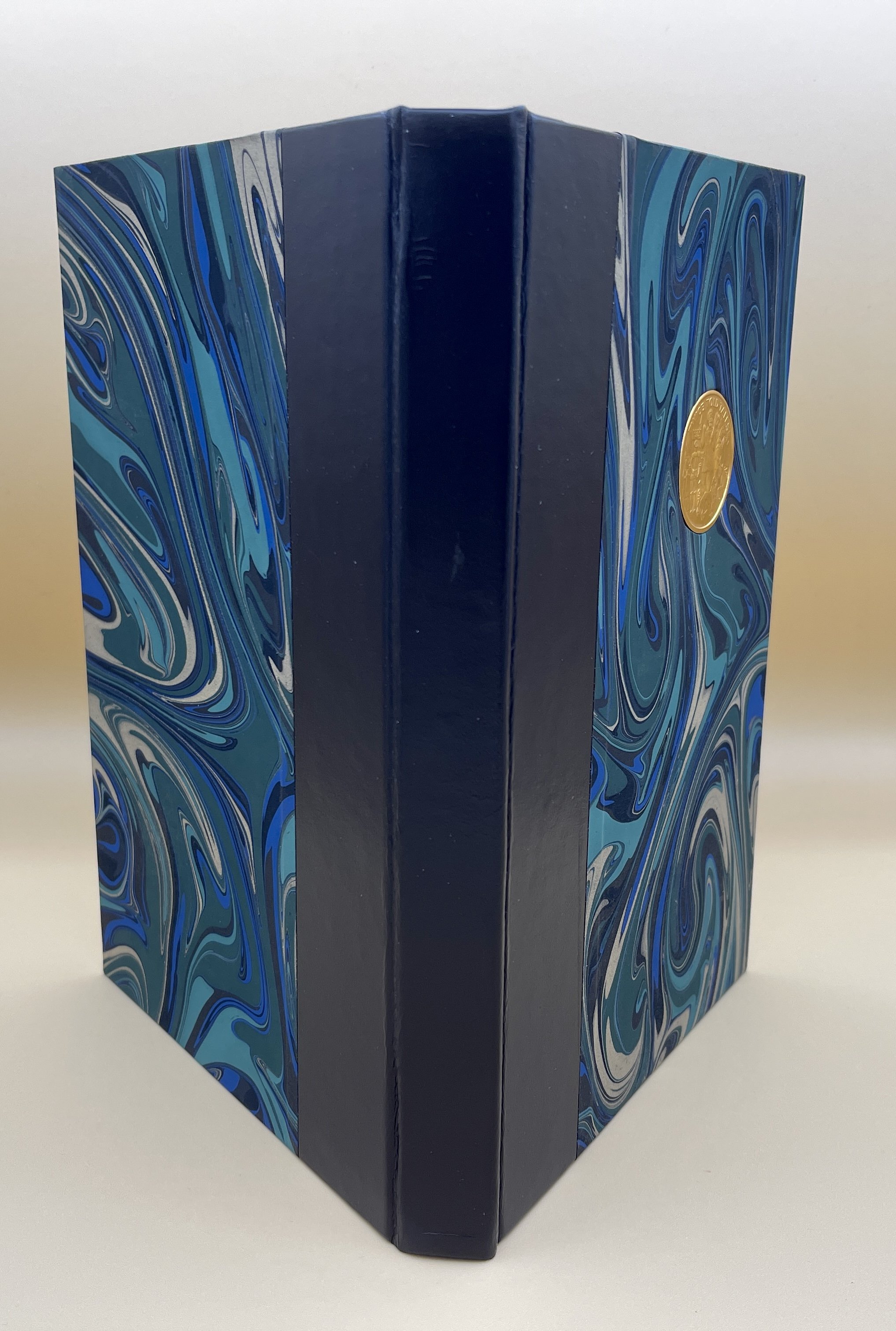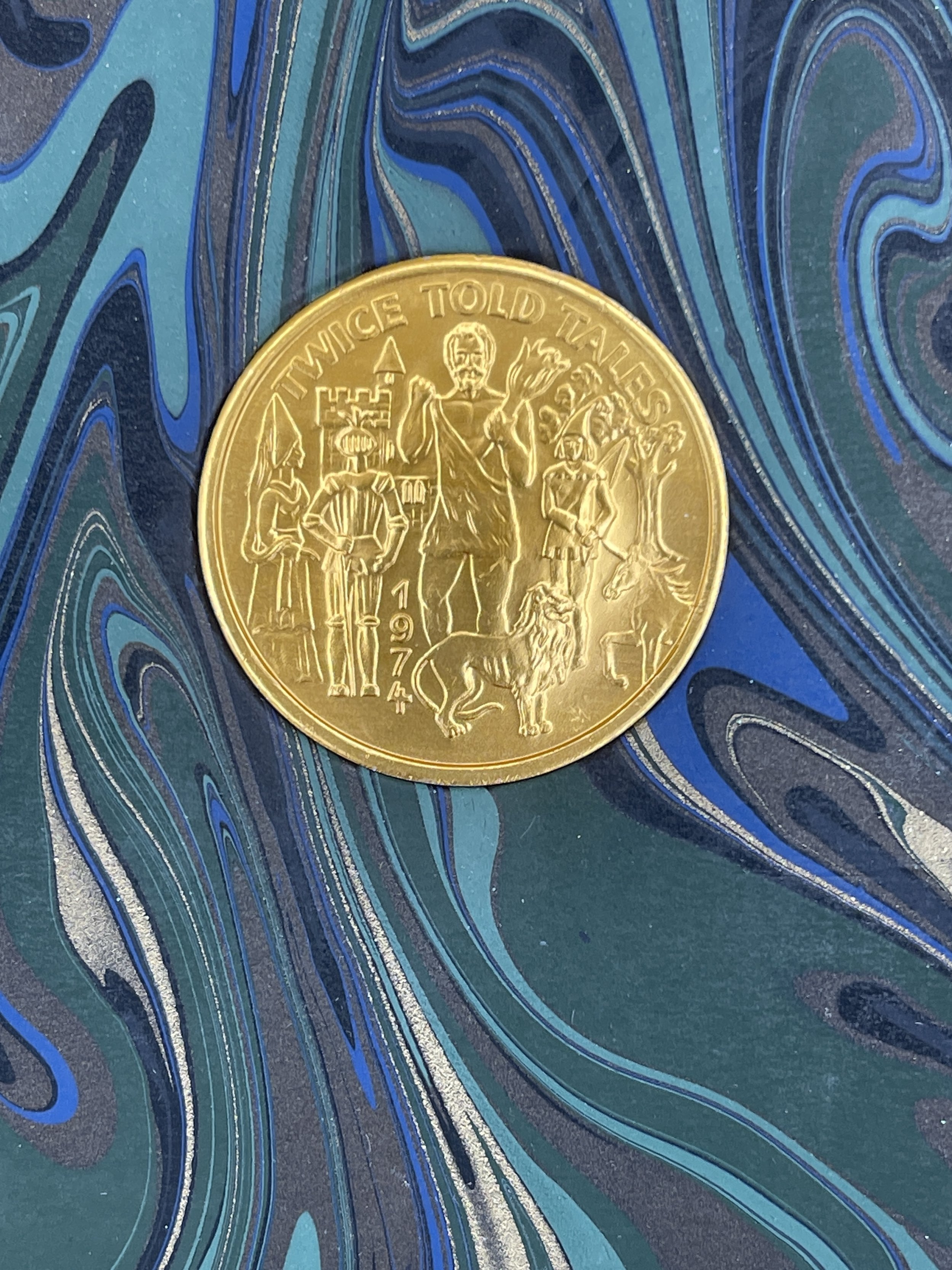Twice Told
This archival, hand-sewn journal is made from 85 gsm, hand-laid Arches 100% cotton rag archival paper stitched with Irish linen thread in the linked pattern that was developed by the ancient Copts and discovered in Nag Hammadi, Egypt in 1945. This stitch allows the book to lay open easily at any page.
This book’s endbands are navy and yellow silk, and its bookmark is calfskin. Its spine is covered in calfskin over raffia, and its boards are wrapped in paper that was hand-marbled by Betty Caponi in Monte San Giusto, Italy.
Treasure binding began with monks in the 6th Century who would encrust volumes with jewels. During the Renaissance, there was a resurgence in treasure binding. This is a contemporary revival of the treasure binding in which a lucky charm has been embedded in the cover of this book.
The talisman in this book is a 1974 Mardi Gras doubloon. As Socrates may have said, “the more commodious the guest house, the less your visitors will talk smack about you in private.” Bravo.
This book is roughly 6.5 x 10” with more than 150 blank pages inside.
This archival, hand-sewn journal is made from 85 gsm, hand-laid Arches 100% cotton rag archival paper stitched with Irish linen thread in the linked pattern that was developed by the ancient Copts and discovered in Nag Hammadi, Egypt in 1945. This stitch allows the book to lay open easily at any page.
This book’s endbands are navy and yellow silk, and its bookmark is calfskin. Its spine is covered in calfskin over raffia, and its boards are wrapped in paper that was hand-marbled by Betty Caponi in Monte San Giusto, Italy.
Treasure binding began with monks in the 6th Century who would encrust volumes with jewels. During the Renaissance, there was a resurgence in treasure binding. This is a contemporary revival of the treasure binding in which a lucky charm has been embedded in the cover of this book.
The talisman in this book is a 1974 Mardi Gras doubloon. As Socrates may have said, “the more commodious the guest house, the less your visitors will talk smack about you in private.” Bravo.
This book is roughly 6.5 x 10” with more than 150 blank pages inside.
This archival, hand-sewn journal is made from 85 gsm, hand-laid Arches 100% cotton rag archival paper stitched with Irish linen thread in the linked pattern that was developed by the ancient Copts and discovered in Nag Hammadi, Egypt in 1945. This stitch allows the book to lay open easily at any page.
This book’s endbands are navy and yellow silk, and its bookmark is calfskin. Its spine is covered in calfskin over raffia, and its boards are wrapped in paper that was hand-marbled by Betty Caponi in Monte San Giusto, Italy.
Treasure binding began with monks in the 6th Century who would encrust volumes with jewels. During the Renaissance, there was a resurgence in treasure binding. This is a contemporary revival of the treasure binding in which a lucky charm has been embedded in the cover of this book.
The talisman in this book is a 1974 Mardi Gras doubloon. As Socrates may have said, “the more commodious the guest house, the less your visitors will talk smack about you in private.” Bravo.
This book is roughly 6.5 x 10” with more than 150 blank pages inside.






